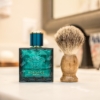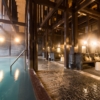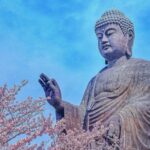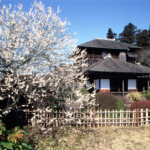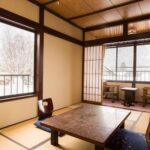The Etiquette of Ryokan and Onsen: Respecting Japanese Manner and Rules
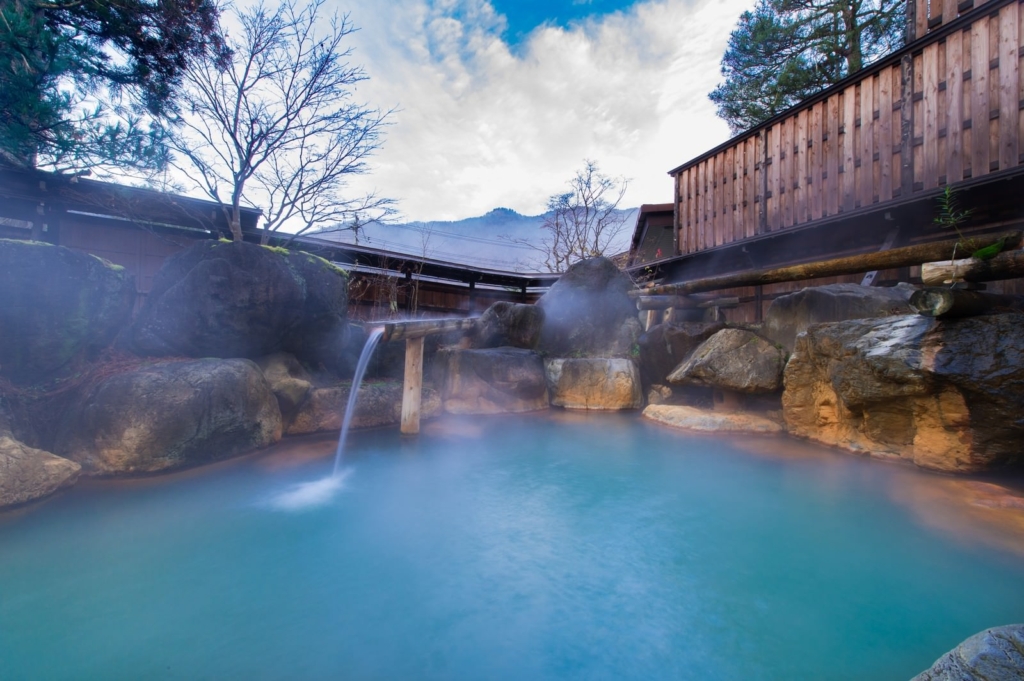
One of the joys of traveling in Japan is undoubtedly staying at a traditional ryokan (旅館: Japanese inn), and indulging in the shared baths or onsen (温泉: hot springs) that they typically offer.
Most ryokans feature communal baths, often complemented by an outdoor hot spring (露天風呂: rotenburo), allowing you to soak in the breathtaking seasonal views while immersed in relaxing hot waters.
However, there are specific etiquettes associated with these onsen and communal baths in Japan. To fully savor the Japanese tradition and relaxation, while being considerate of other guests, you need to be aware of these customs.
Here’s a brief overview of the important onsen manners to keep in mind during your ryokan stay:
Onsen Etiquette at Japanese Ryokans
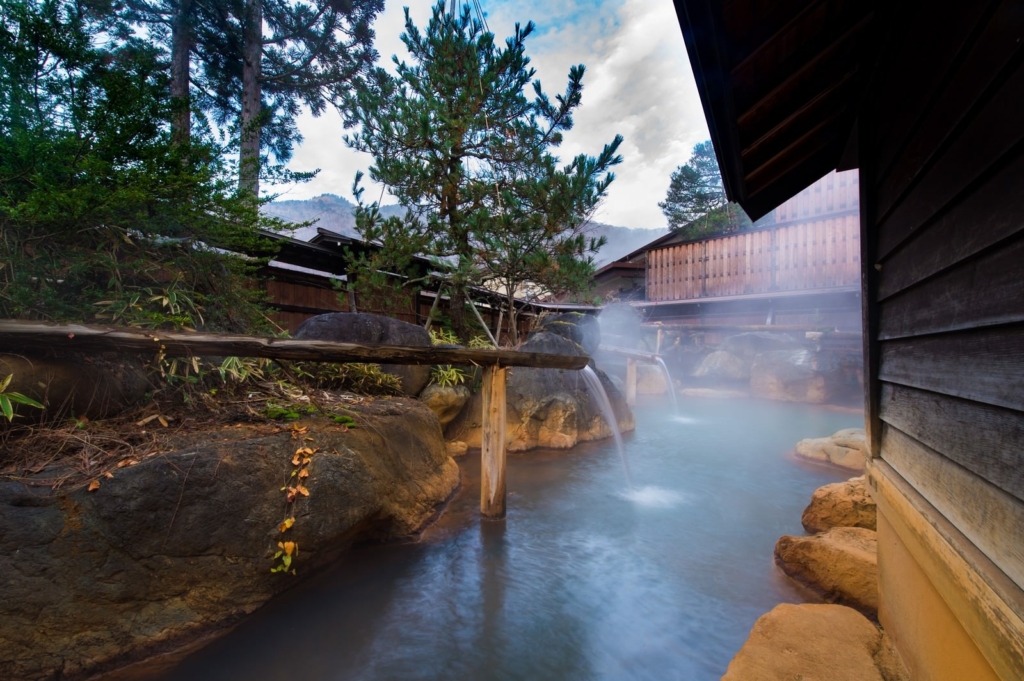
When you decide to visit the communal bath, bring with you the yukata (浴衣), obi (帯), and towels (large and small) found in your room (often in the closet). The smaller towel often bears the hotel’s name. If a large towel is not provided in your room, don’t fret, as they are usually available at the bath area.
The communal baths are separated by gender.
At the entrance to each bath, you will see the kanji characters for '男 (men)’ and '女 (women)’. While the color-coding can often provide a good hint, it might be helpful to familiarize yourself with these characters beforehand.
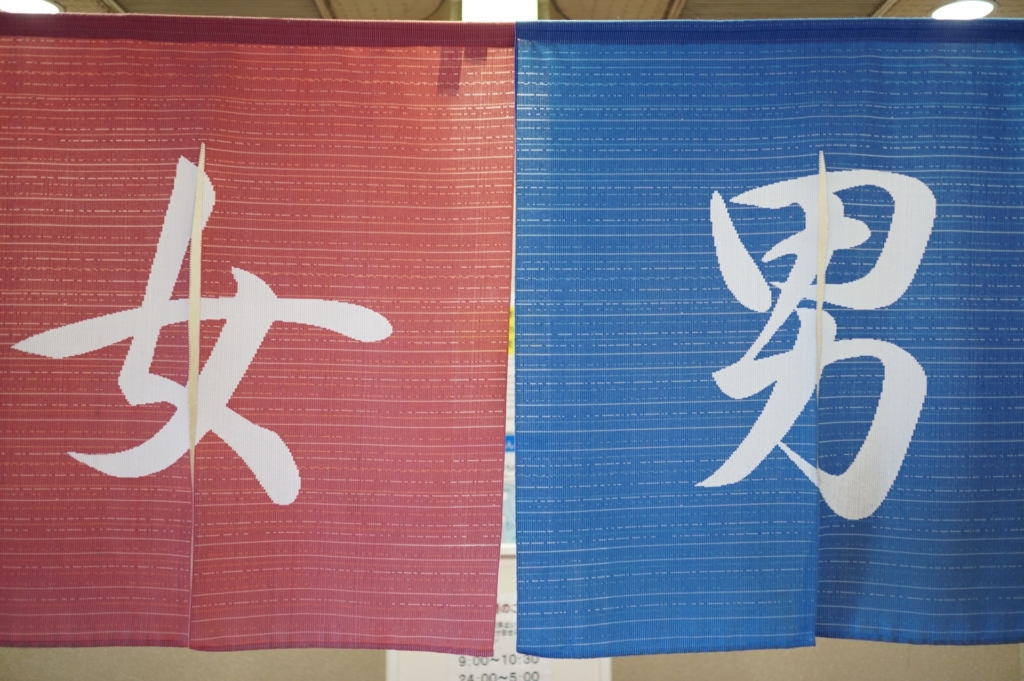
The character for '女 (women)’ stems from the image of a 'woman kneeling in prayer’. It is believed that women traditionally prayed to the gods and purged negative energies.
While most ryokans have separate baths for men and women, in cases where only one bath is available, bathing times will be designated for each gender.
Each ryokan may vary, but typically, large ryokans allow you to bathe up until around 11pm (please confirm with your ryokan if needed). Also, due to many guests wanting to enjoy the onsen in the morning, communal baths are generally available then as well. Taking a morning bath can be a refreshing start to your day.
Bathhouse Etiquette in Japan
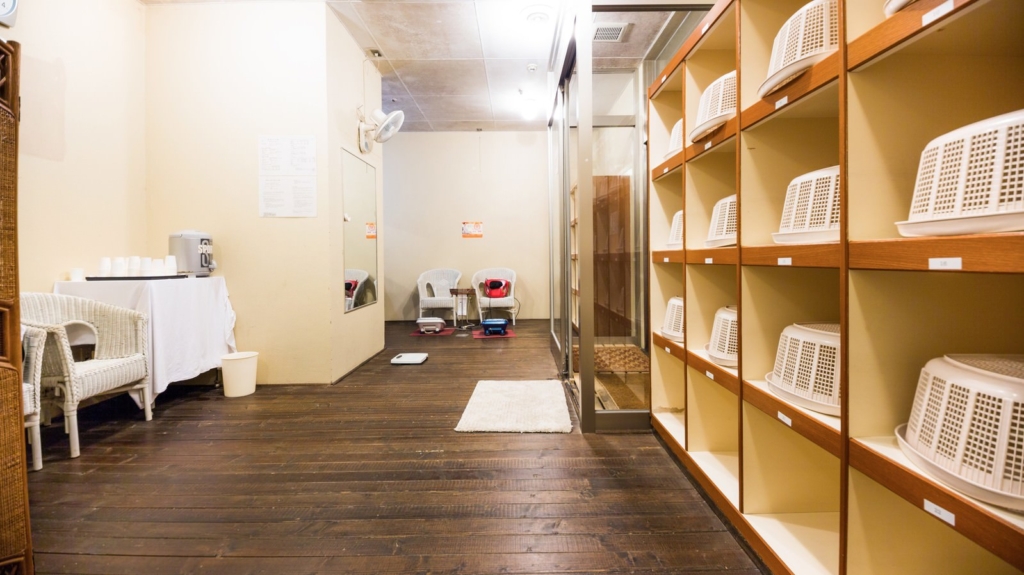
As you pass through the entrance, you will find a dressing room. Locate an empty basket or locker to place your clothes and large towel.
The small towel is for washing your body and should be taken into the bathing area. Despite its size, it’s used to cover yourself as you navigate the area.
Once you enter the bathing area, your first task is to wash your body. Do not dive straight into the bath water.
Locate an available shower or faucet and sit in front of it to wash.
While shampoo and soap are often provided, feel free to use your own toiletries. The crucial point is to rinse off any soap or shampoo thoroughly from your body.
As everyone uses the same bathwater, leaving any soap or shampoo residue in the water is a breach of etiquette. Unlike western-style baths, washing your body in the bath itself is a no-go.
Even if you’ve rinsed the small towel used for washing thoroughly, you should never immerse it in the bathwater. It’s better to leave it outside the bath, close by.
If you have long hair, tie it up so that your hair does not soak into the bathwater. This is another good etiquette to keep the communal bath area clean.
Communal bats and onsens places of relaxation, so do not talk loudly or make a lot of noise. Respect the quiet environment.
Before returning to the changing room, give your body a quick wipe-down with the small towel. This helps prevent the changing room floor from getting wet.
Dress in the yukata you brought from your room after bathing.
The cotton yukata effectively dissipates body moisture and perspiration, and is comfortable to wear. I Hope you will enjoy your yukata.
Can I Wear a Swimsuit (swimming suit) in the Onsen?
Many visitors from abroad might feel uncomfortable with the idea of being naked in a public bathing facility. They might wonder if it’s acceptable to wear a swimsuit.
In Japan’s communal baths, it is standard to bathe completely naked without wearing swimsuits or underwear. This is a part of Japanese culture and it is said that stripping away societal status and indicating equality amongst all bathers.
For those who feel a bit shy about being naked in public, trying the following options are recommended:
– Use the bath or shower in your room.
– Upgrade to a room with a private open-air bath (露天風呂: roten-buro).
– Use a private bath at the ryokan (or nearby).
Most private baths require a reservation, so be sure to confirm with the ryokan beforehand. These private baths can be enjoyed by families or couples.
Personally, if you’re willing to pay an extra fee for a private bath, I would recommend reserving a room with an open-air bath from the start. This way, you can enjoy your private bath as much as you want without worrying about the time.
Japanese people don’t feel as awkward about being naked in communal baths as you might. It’s simply a matter of familiarity.
Bathing in the communal bath can be a wonderful opportunity to experience a sense of freedom and relaxation. If you’re even a bit curious, I encourage you to give it a try.


